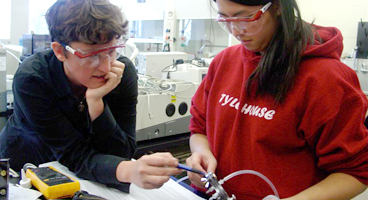Document Type
Article
Publication Date
10-20-2020
Publication Title
Proceedings of the National Academy of Sciences of the United States of America
Abstract
Irrigated agriculture contributes 40% of total global food production. In the US High Plains, which produces more than 50 million tons per year of grain, as much as 90% of irrigation originates from groundwater resources, including the Ogallala aquifer. In parts of the High Plains, groundwater resources are being depleted so rapidly that they are considered nonrenewable, compromising food security. When groundwater becomes scarce, groundwater withdrawals peak, causing a subsequent peak in crop production. Previous descriptions of finite natural resource depletion have utilized the Hubbert curve. By coupling the dynamics of groundwater pumping, recharge, and crop production, Hubbert-like curves emerge, responding to the linked variations in groundwater pumping and grain production. On a state level, this approach predicted when groundwater withdrawal and grain production peaked and the lag between them. The lags increased with the adoption of efficient irrigation practices and higher recharge rates. Results indicate that, in Texas, withdrawals peaked in 1966, followed by a peak in grain production 9 y later. After better irrigation technologies were adopted, the lag increased to 15 y from 1997 to 2012. In Kansas, where these technologies were employed concurrently with the rise of irrigated grain production, this lag was predicted to be 24 y starting in 1994. In Nebraska, grain production is projected to continue rising through 2050 because of high recharge rates. While Texas and Nebraska had equal irrigated output in 1975, by 2050, it is projected that Nebraska will have almost 10 times the groundwater-based production of Texas.
Keywords
Crop production, Groundwater, Hubbert curve, Ogallala aquifer, Peak water
Volume
117
Issue
42
First Page
26145
Last Page
26150
DOI
10.1073/pnas.2008383117
ISSN
00278424
Creative Commons License

This work is licensed under a Creative Commons Attribution-NonCommercial-No Derivative Works 4.0 International License.
Version
Version of Record
Recommended Citation
Mrad, Assaad; Katul, Gabriel G.; Levia, Delphis F.; Guswa, Andrew J.; Boyer, Elizabeth W.; Bruen, Michael; Carlyle-Moses, Darryl E.; Coyte, Rachel; Creed, Irena F.; Van De Giesen, Nick; Grasso, Domenico; Hannah, David M.; Hudson, Janice E.; Humphrey, Vincent; Iida, Shin'Ichi; Jackson, Robert B.; Kumagai, Tomo'Omi; Llorens, Pilar; Michalzik, Beate; Nanko, Kazuki; Peters, Catherine A.; Selker, John S.; Tetzlaff, Doerthe; Zalewski, MacIej; and Scanlon, Bridget R., "Peak Grain Forecasts for the US High Plains Amid Withering Waters" (2020). Engineering: Faculty Publications, Smith College, Northampton, MA.
https://scholarworks.smith.edu/egr_facpubs/27



Comments
This article contains supporting information online at https://www.pnas.org/content/suppl/2020/09/30/2008383117.DCSupplemental
doi:10.1073/pnas.2008383117/-/DCSupplemental